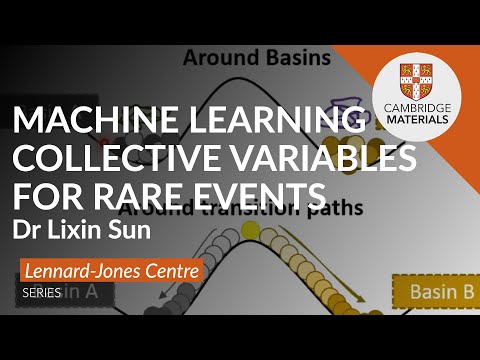Description:
Explore a data-driven machine learning algorithm for learning collective variables with a multitask neural network in this 18-minute Lennard-Jones Centre discussion group seminar by Dr Lixin Sun from Microsoft Research Cambridge. Discover new methods for labeling atomic configurations and approximating committor functions, and learn how the resulting ML-learned collective variable serves as an effective low-dimensional representation for capturing reaction progress and guiding umbrella sampling to obtain accurate free energy landscapes. Understand how this approach enables automated dimensionality reduction for energy-controlled reactions in complex systems, offering a unified and data-efficient framework that can be trained with limited data and outperforms single-task learning approaches, including autoencoders. Delve into topics such as enhanced sampling, the importance of good collective variables for reaction rate calculations, and the connection between committor functions and cross-entropy loss. Examine practical applications through examples like the SD extended Brown-Müller model and alanine dipeptide.
Read more

Multitask Machine Learning of Collective Variables for Enhanced Sampling of Rare Events
Add to list